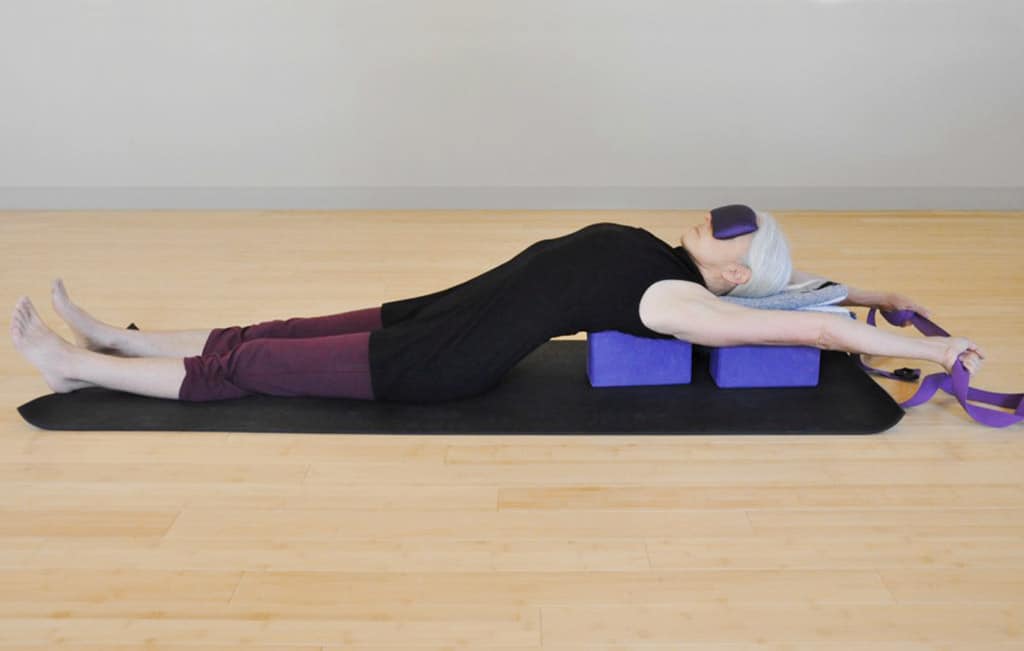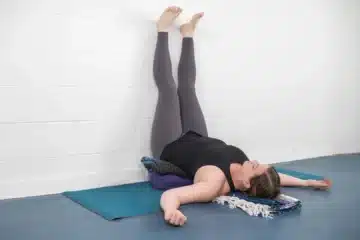In the vast ocean of yoga, each pose serves as a unique vessel for self-discovery, offering practitioners an opportunity to dive deeper into their bodies, minds, and spirits.
Among these transformative postures, Fish Pose, or Matsyasana, emerges as a beacon of grace and expansion. Rooted in ancient yogic tradition, Fish Pose invites practitioners to open their hearts, expand their chests, and embrace the boundless possibilities of inner exploration.
Let’s embark on a journey to unravel the essence of Fish Pose and uncover its myriad benefits:
Benefits of Matsyasana:
- Heart Opening: At its core, Fish Pose is renowned for its profound heart-opening qualities. As the chest lifts towards the sky and the heart center expands, this pose stimulates the anahata chakra, fostering feelings of love, compassion, and emotional healing.
- Thoracic Extension: Fish Pose encourages a deep extension of the thoracic spine, counteracting the effects of slouching and forward-leaning postures. This helps improve posture, alleviate tension in the upper back and shoulders, and promote better respiratory function.
- Stretches Neck and Throat: By tilting the head back and lifting the chest, Fish Pose provides a gentle stretch to the neck and throat muscles. This can help alleviate stiffness and discomfort in the neck area, as well as promote thyroid health and communication.
- Relieves Respiratory Issues: The expansion of the chest in Fish Pose creates space in the lungs, facilitating deeper breathing and enhancing respiratory function. This can be particularly beneficial for individuals suffering from asthma, bronchitis, or other respiratory ailments.
- Relaxes the Nervous System: As practitioners surrender into the pose, Fish Pose induces a state of deep relaxation, calming the nervous system and reducing stress and anxiety. This can promote mental clarity, emotional balance, and overall well-being.
How to Practice Matsyasana:
- Starting Position: Begin by lying flat on your back on the mat, with your legs extended and your arms resting alongside your body. Allow your palms to rest comfortably on the mat, facing downwards.
- Preparation: Press your forearms and elbows into the ground, drawing your shoulder blades together to lift your chest towards the sky. Keep your forearms parallel to each other and your elbows directly beneath your shoulders.
- Lift Into the Pose: Inhale deeply as you press into your forearms and elbows, lifting your chest towards the sky. Arch your back gently and allow your head to fall back, bringing the crown of your head to rest lightly on the mat.
- Support Your Chest: To deepen the stretch, walk your hands towards your hips and press firmly into your palms. Lift your chest even higher, expanding through the ribcage and opening the heart center.
- Neck Alignment: Ensure that your neck remains in a neutral position, without straining or compressing the cervical spine. Gaze towards the space behind you or gently close your eyes and turn your attention inward.
- Breathe and Hold: Take slow, deep breaths as you hold the pose for 30 seconds to one minute, allowing the breath to flow freely through your chest and lungs. Soften any areas of tension and surrender into the pose with each exhale.
- Release and Rest: To release the pose, gently lower your chest back down to the mat and straighten your arms alongside your body. Take a moment to rest in Savasana (Corpse Pose), allowing your body to integrate the benefits of Fish Pose.
Modifications and Variations:
- Support Under the Back: If you have difficulty lifting your chest off the mat, place a yoga block or bolster under your upper back for support.
- Leg Position: For a deeper stretch in the thighs and hip flexors, bend your knees and place the soles of your feet on the mat, hip-width apart.
- Arm Variation: Experiment with different arm positions, such as clasping your hands behind your back or extending your arms overhead, to deepen the stretch and explore different sensations in the shoulders and chest.
Precautions:
- Avoid Fish Pose if you have any recent or chronic neck injuries, such as cervical disc herniation.
- If you experience discomfort or strain in the lower back, modify the pose by placing additional support under the back or reducing the degree of backbend.
Conclusion
Fish Pose, with its graceful expansion and heart-opening qualities, serves as a powerful gateway to self-discovery, healing, and transformation.
By integrating Matsyasana into your yoga practice, you can unlock the myriad benefits of this dynamic posture, cultivating greater openness, resilience, and compassion both on and off the mat.
Embrace the journey of inner exploration and expansion that Fish Pose offers, and allow its transformative energy to guide you towards a deeper connection with yourself and the world around you.



